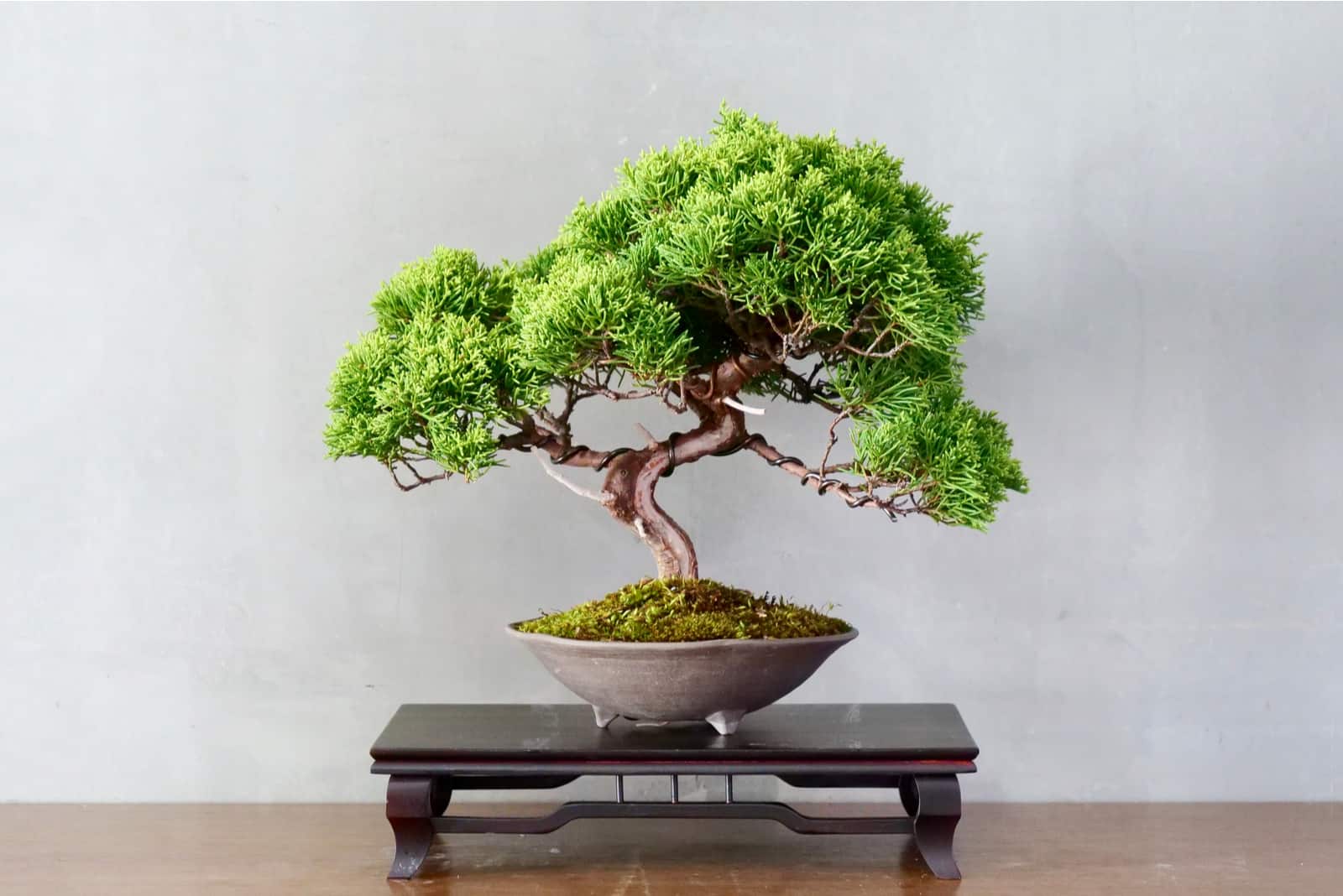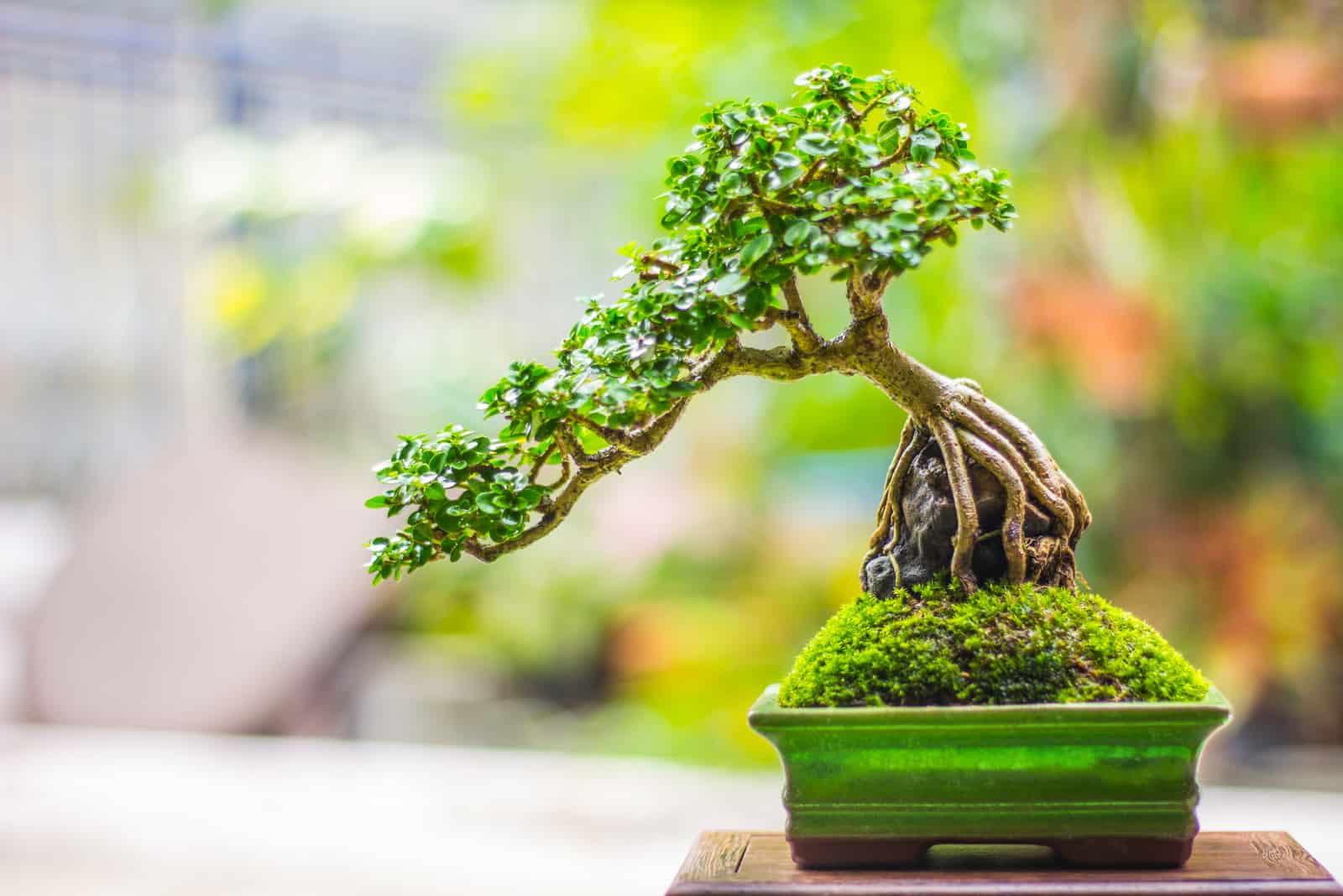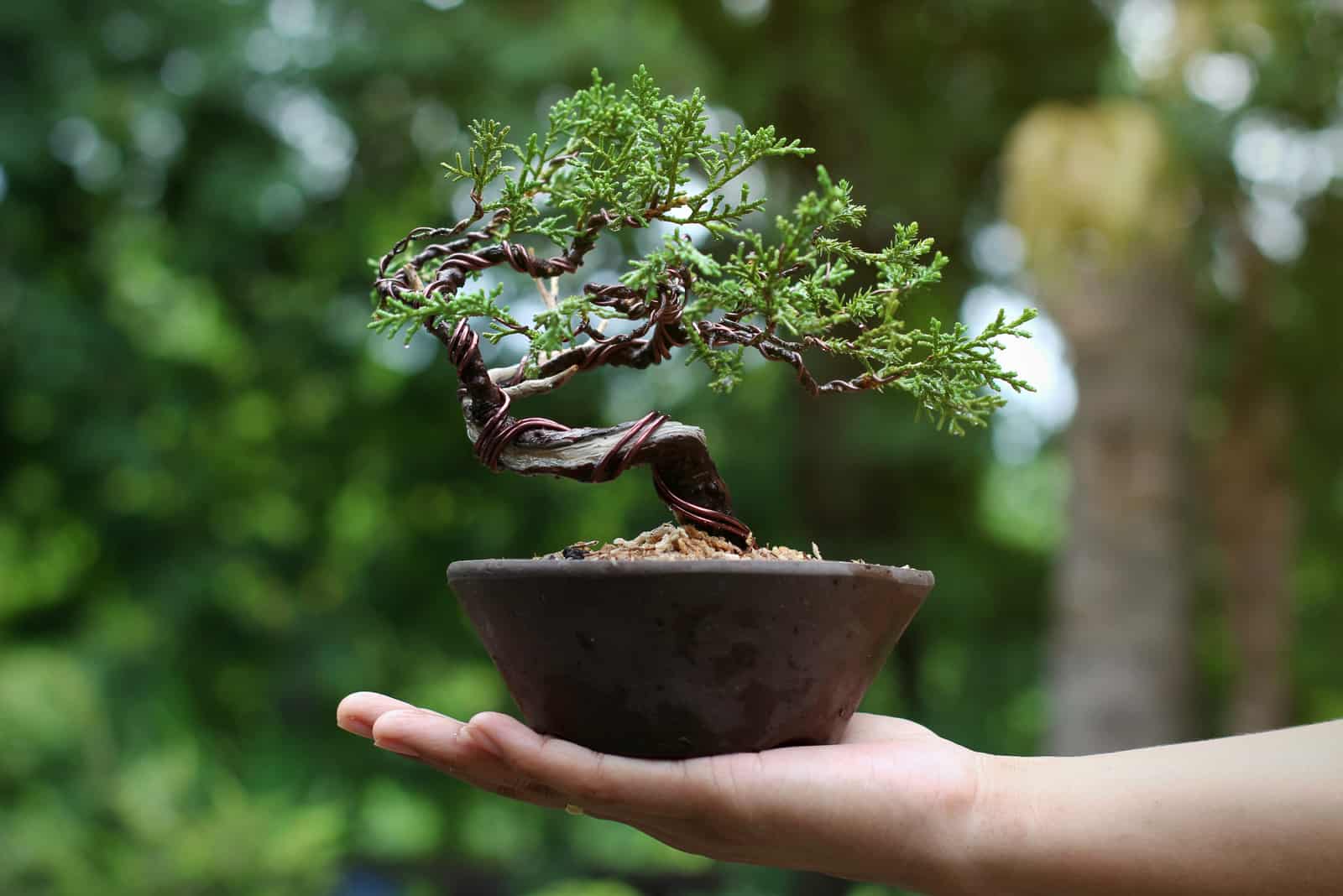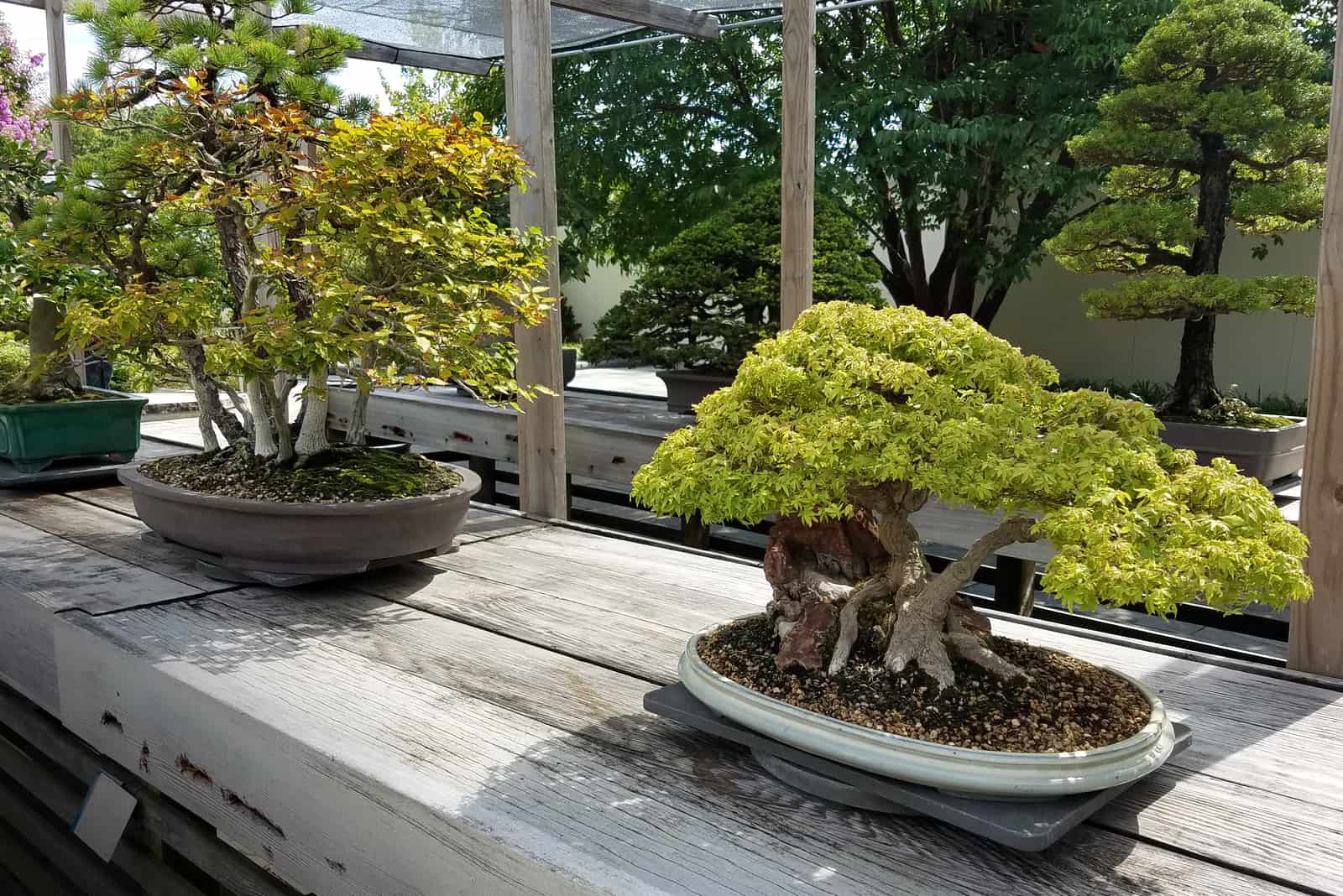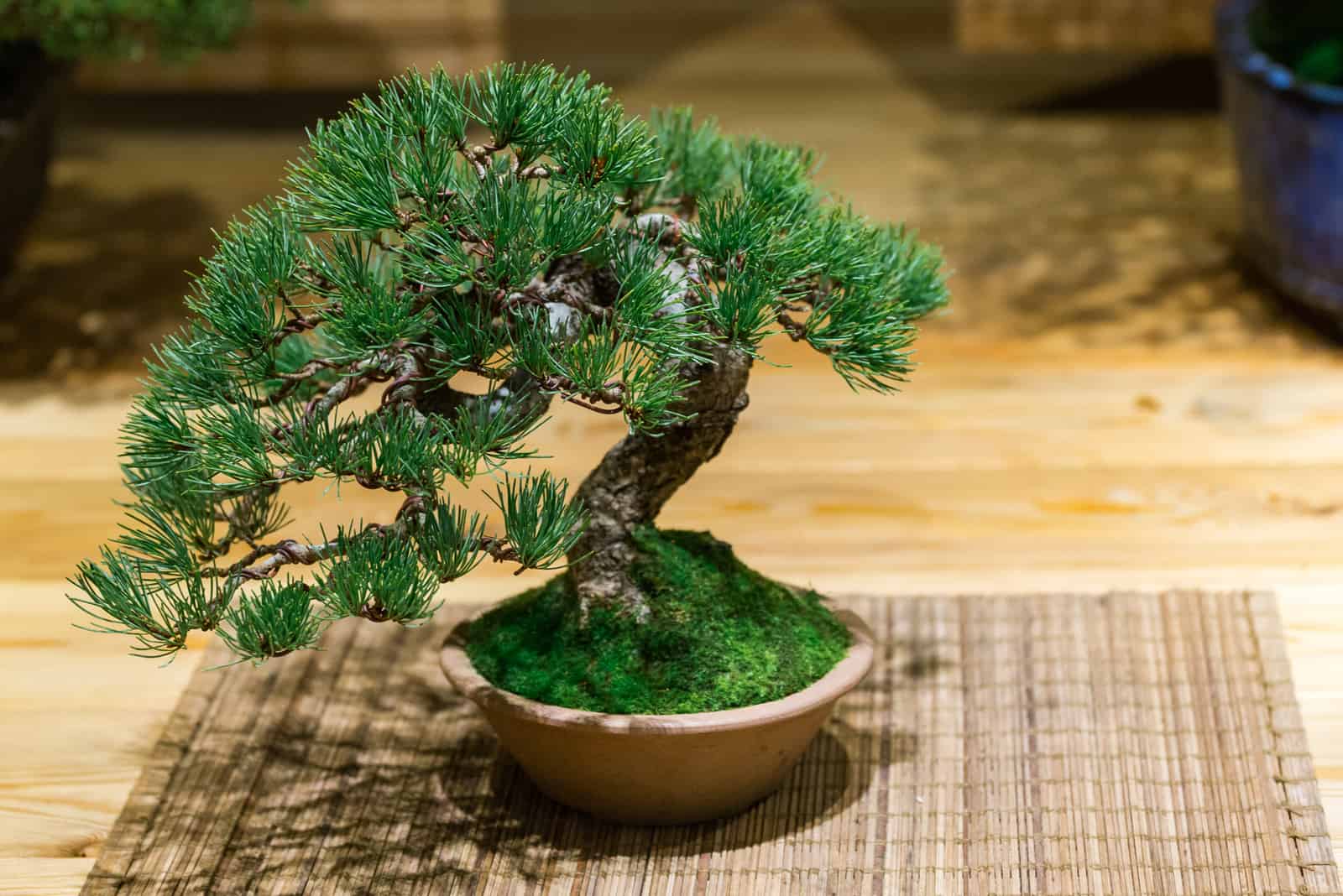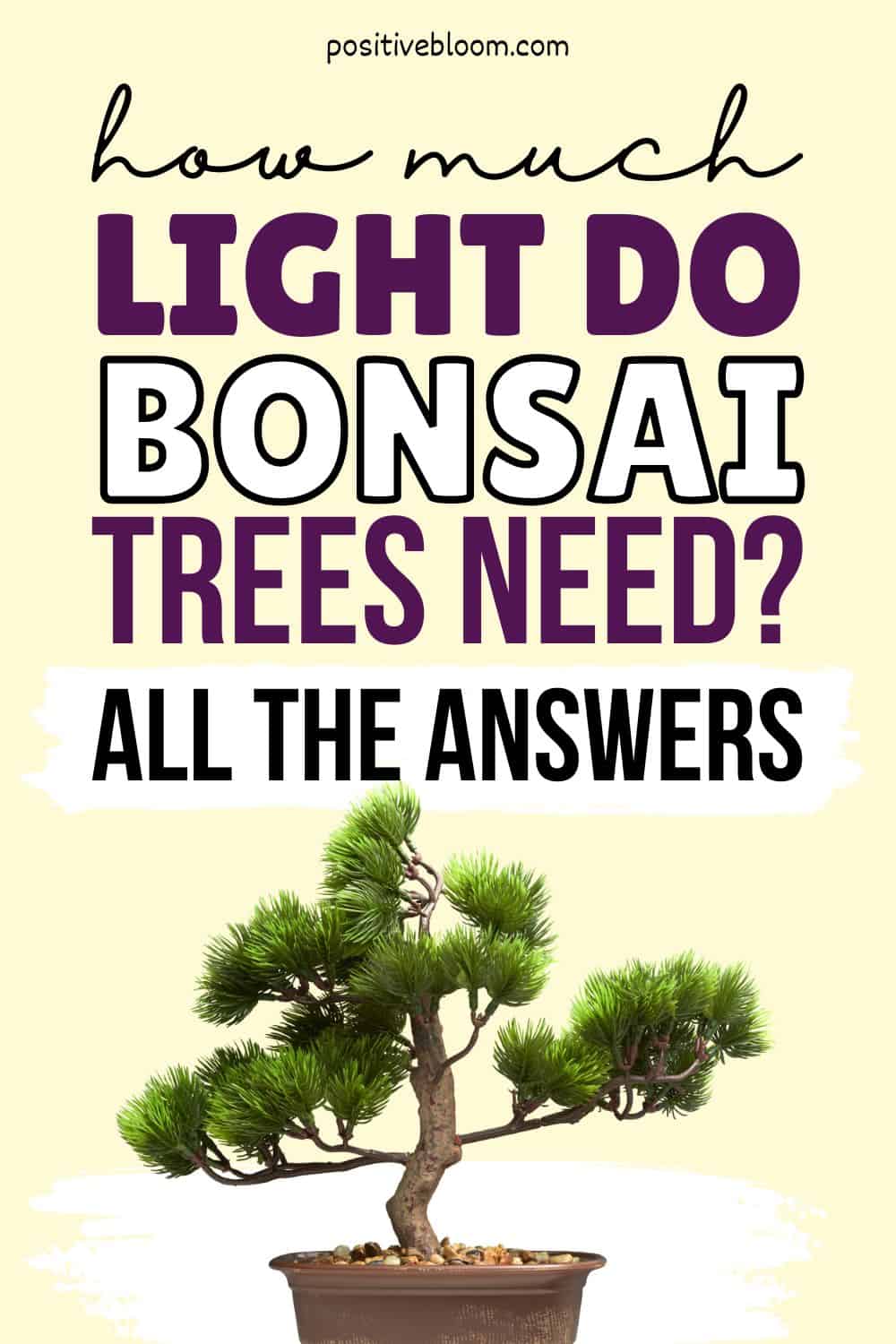Bonsai tree care is often thought of as being particularly difficult, but it’s actually quite easy once you get the hang of it. Yes, they need pruning and attention, but so does any other plant.
One question we‘re frequently asked is, “How much light do bonsai trees need?” So we decided to answer it once and for all!
Of course, not every species of bonsai requires the same amount of light, so you should always research your plant before placing it somewhere permanently.
We’ll talk about different types favored by bonsai enthusiasts as well as their lighting requirements and general needs.
Let’s get started!
How Much Light Do Bonsai Trees Need?
Bonsai trees need direct sunlight to thrive and perform photosynthesis in order to produce energy and food. However, if the weather outside is scorching you may have to place your miniature tree somewhere with indirect sunlight so its leaves don’t get burned.
This type of tree usually needs between 5-7 hours of sunlight each day, but that can vary depending on the species.
There are two types of bonsai, and these categories will help you decide where best to plant your tree. Tropical bonsai prefer warmer climates and are ideal for growing indoors, whereas cold-hardy bonsai trees should be grown outside.
Indoor Bonsai
Indoor bonsai trees are all tropical and subtropical varieties, and you should place them near a south-facing window or on a bright windowsill so that they can get an ideal amount of light.
These trees prefer warmer temperatures, which should never fall below 45°F even in winter. They are tropical varieties, so they prefer warm and humid environments, and you can mist them from time to time if your home is too dry.
However, even though you can grow them inside, they prefer to be out when the weather is warm enough. You can move these trees in spring and keep them outside until fall or the temperatures drop below 45°F.
Ficus Ginseng
Ficus bonsai are popular and easy to care for tropical trees. This particular variety can thrive in both direct and indirect light, but it prefers shade once the temperatures and heat are particularly high.
You can always introduce it to some grow lights for plants if you can’t find the best place for it.
Even though it doesn’t require much maintenance and is perfect for beginners, you still need to give it at least some care. Ginseng bonsai requires thorough watering whenever the topsoil is dry.
You should also fertilize it every other week during its growing season with organic fertilizers such as seaweed fertilizer or fish emulsion.
The potting mix needs to be well-draining but still able to retain some moisture, so sandy clay growing medium is an ideal option.
Don’t forget that ficus trees thrive in tropical climates, so mist the leaves from time to time or use a humidifier.
Hawaiian Umbrella
The Hawaiian umbrella is one of our favorite houseplants. It needs plenty of light to prosper and get to its desired shape.
Even though it adores moist growing mediums, you should be careful about overwatering it because that can cause serious issues. You should water it 3-4 times a week depending on the weather conditions and the climate, but always check the soil before irrigating this plant.
The good news is that you can get ready-made bonsai soil, so you won’t have to worry about drainage, overwatering, and all the other problems that come with it.
Feed it with bonsai food following the instructions on the package and ensure that humidity levels are high so that it doesn’t dry out.
Fukien Tea
Fukien tea, or Carmona, doesn’t like the scorching afternoon sun, so you should keep it somewhere where it won’t burn its delicate leaves. It can tolerate an hour of direct light per day, so an east-facing window would be ideal.
This plant has moderate watering needs, though it can stand some underwatering if it goes too long without it. However, it also detests overwatering, so keep the substrate moist and water it only when the topsoil dries out.
Akadama bonsai soil, organic fertilizer, and a humidifier are all this plant needs for optimal growth.
Of course, every bonsai tree needs pruning, and to that end, you’ll find some amazing tips for getting your tree into shape in this video:
Sweet Plum
This bonsai tree species can handle full sun exposure, but it prefers shade in the afternoon hours. This makes east-facing windows the best choice, but you can also put this plant near south or west-facing windows as well – just don‘t let the direct light hurt its leaves!
You shouldn‘t expose it to temperatures lower than 55°F because it would lose many of its leaves and branches. However, new growth appears quickly, which doesn’t mean you should bring your plants to the brink of death, however.
Plant it in a bonsai pot (or any small pot with drainage holes) filled with a substrate that drains quickly and retains water. You can achieve this composition by mixing 25% perlite and lava stone with 50% akadama.
Don’t forget to occasionally feed this tree with either an organic or liquid fertilizer diluted to half-strength. Fertilize it 1-2 times a month, and even less in winter.
Avoid feeding plants that have recently been repotted, and always water the plant thoroughly before fertilizing it.
This subtropical tree thrives in more humid environments, so don’t forget to raise the air moisture around it if your household has low-humidity levels.
If you meet all its conditions it will grow faster, but bonsai trees tend to grow rather slowly. If yours is particularly slow you can rest assured you’re not doing anything wrong – it’s just the way of nature.
Outdoor Bonsai
The other category of bonsai trees are cold-hardy, outdoor bonsais. Unlike tropical bonsai trees, cold-hardy bonsais cannot grow indoors because they need cold temperatures in order to enter dormancy.
However, if the temperatures are freezing you should protect them, but not by placing them somewhere warm. You can build a shelter specifically designed for your bonsai or take it inside your garage.
These trees can endure quite a lot, and even withstand being frozen for a short period. However, temperatures below 20°F may damage your plant, which is why you should always protect them by moving them out of the extreme cold if your region experiences harsh winters.
Leave them outside from May to the middle of November, and take them back inside once it starts to freeze.
Don’t forget to water your outdoor bonsai during winter because it helps keep it warm and alive.
Finally, when you notice buds and new growth it means that your plant has started waking up. Move it somewhere cool where it’ll still receive enough light to develop.
Chinese Elm
This tree thrives in full sun, but it still needs some shade if the temperatures are unbearable and the sun is too strong.
If you live in a cooler climate you can irrigate this plant once a week, but warmer temperatures dry the soil out faster. This means your Chinese elm might need up to 3-4 waterings per week in warmer regions, and if your climate is desert-like, and I mean arid with fiery temperatures, you can water it every day.
This tiny tree will adapt to almost any soil, but it prefers nutrient-rich and well-draining mediums.
This plant prefers organic fertilizers, and you can use either liquid or pellets. If you prefer liquid organic fertilizers you should apply them twice a month, and if you use a chemical variety you should dilute the fertilizer to half-strength.
On the other hand, you can apply pellets once a month because they release nutrients more slowly.
Repotting is one of the most essential parts of the bonsai plant care guide. You should repot them every two years while they’re young, and less frequently as they grow older.
The most important thing about repotting bonsai trees is to replant them in spring when they wake up from dormancy and start growing again.
You can learn some helpful tips for repotting bonsai in the video below:
Juniper Bonsai
I’m definitely not the only one who has asked myself: “Is bonsai toxic to cats?” Even though not all bonsai trees are toxic, the juniper bonsai is sadly harmful to your cat.
However, if you don’t own any pets or have a perfect place to put this tree where your cat can’t reach it, you can safely grow this bonsai.
Juniper is another plant that adores light, but only in reasonable amounts. It would be best to place it somewhere it can get most of the morning sun, and then be sheltered from the harsh midday light.
Juniper bonsai cannot handle dry spells, but it won’t die if you forget to water it for a day or two. However, you should irrigate it whenever you feel that the topsoil is dry.
Like all bonsai trees, the juniper tree also requires well-draining soil. If you don’t have much faith in store-bought bonsai soils, you can always make your own by mixing akadama, perlite, grit, and even potting compost (preferably organic).
This tree can adapt to either slow-release fertilizers like pellets or liquid variants diluted to half strength. You can use pellets once a month and liquid fertilizers every other week. We always prefer using organic fertilizers because they’re not too strong and there’s less chance they’ll burn or over-fertilize your plants.
3 Signs That Your Bonsai Tree Needs More Light
Thankfully, your plants will always let you know if something’s not right – whether they need more water, nutrients, or light.
There are three main signs that your bonsai needs more light: legginess, stunted growth, and dry, yellow foliage.
We’ll discuss all these issues and explain why light has such different, and you might even say contradictory, effects (legginess refers to more growth, but lack of light can also make the plants grow slower).
1. Legginess
Many plants grow leggy in low-light conditions, and it’s the same for your bonsai. It might seem strange at first that the plant keeps growing without the ability to photosynthesize.
However, this growth is not a pleasant thing to look at, and you’ll know what we’re talking about when you see those elongated branches searching for light.
Your plant will start stretching its limbs in the hope of finding brightness somewhere nearby. However, those branches become weak and the plant droops because it doesn’t have the strength.
Plants always grow towards the light, which is why legginess is one of the most common symptoms of low-light levels.
2. Stunted Growth
On the other side of the growth spectrum, we have stunted or non-existent growth. As we already mentioned, plants need sunlight to photosynthesize food and energy, and they cannot develop without them.
Without energy, the plant either slows down or completely stops growing in order to save what little energy it has left.
3. Yellow And Dry Leaves
A lack of sunlight also leads to dry, yellow leaves. Leaves don’t necessarily have to turn yellow, they can simply fade in color due to an insufficient amount of light.
The reason for this color change is that the plant cannot produce enough chlorophyll, which is what makes plants green.
Furthermore, yellow leaves reduce the surface area that is able to photosynthesize, so the leaves dry out because there’s not enough energy within the plant. Dry and yellow leaves will drop because your plant will divert all its strength into survival.
Can You Grow Bonsai Trees Under Artificial Lights?
Yes, bonsai trees can grow under grow lights, although they prefer natural light. However, any light source is better than low-light conditions.
You just need to be careful about the emission of heat because grow lights can burn your plants if the heat is too high or the lamp is placed too close to your bonsai.
However, not all lamps emit the same amount of heat, and you can read about the effects of different lights on your miniature trees below.
LED Lights
LED lights are our favorite type of grow lights because they have the light intensity your plants need without the heat.
They also don’t use too much energy precisely because of their low heat emission.
However, you should leave approximately 12-18 inches between the lamp and the plant.
The good thing about LED lights is that they are usually full-spectrum and the closest artificial thing to natural light you can get.
Full-spectrum lights contain red and blue lights, which are necessary for photosynthesis and plant growth, as well as some other lights that your plants can benefit from.
UV light can make your bonsai trees more vividly colored, and far-red light also contributes to photosynthesis.
Fluorescent Lights
Fluorescent lights are another great choice because they don’t emit too much heat either. However, they aren’t that intense so you need to keep them running for 16-18 hours a day, which can be quite pricey.
You should place them about 10 inches away from your plants, but if you notice any, even slightly, burnt tips, you should move your plant further away.
Incandescent Lights
These lights are actually the only ones not suitable for bonsai trees. They give off too much heat, which would burn your plant’s leaves.
You might be wondering if you can just place the lights a bit further away from your tree, but the light intensity would lessen and there wouldn’t be enough energy to give your plant what it needs.
Another downside of these lights is that they use way too much energy and are simply not worth such a high electricity bill.
HID Lights
People use HID lights primarily for their hydroponics, but you can find other uses for them, such as nurturing your bonsai plants.
They stimulate just about anything: germination, vegetative growth, and blooming. However, HID lights are quite intense so you should place them at least 2 feet away from your plants.
You must always check the wattage, and if the lamps are 1000 W you shouldn’t place them closer than 15 inches to your plants.
These lights are powerful and can emit a lot of heat, which is why you should ensure proper air circulation and ventilation in the room where you grow your bonsai.
If the lights emit plenty of heat, it means that they use too much energy that is simply going to waste. I mean, it’s not a waste if you have to heat up the room, but because your plants don’t need that much warmth, it’s just another downside.
Q&A
There are still some questions left about the effects of light on bonsai trees.
Below you can find answers to the most frequently asked questions about the connection between light and bonsai, and learn how to incite your tree to grow faster.
What should I do if my bonsai tree is getting too much light?
The obvious thing is to move your plant away from the light, but you shouldn’t place it in complete darkness either.
Direct sunlight can burn bonsai leaves, so you should keep your miniature tree in a spot lit with indirect light.
If your plant is in a highly lit place, you should also water it more. Sun and heat make water evaporate faster, so you should replenish it more frequently.
How long does it take for a bonsai to grow in low light?
Bonsai trees generally need 5-15 years to mature, but if you expose them to low-light levels they can stop growing altogether.
However, there are some bonsai varieties such as the rubber tree bonsai, lucky bamboo, and Norfolk island pine that don’t need plenty of light to develop, but they still need at least five years to reach their optimal size.
How do I make my bonsai tree grow faster?
The best way to help speed up the growth of your bonsai tree is with proper care, so make sure to plant it in well-draining soil, water it frequently, and expose it to enough light.
Repotting and fertilizing are also crucial because they offer more nutrients to your plant, but don’t forget about pruning either; you should trim the roots every so often because they will continue to develop in search of more food.
Finally, you can always choose a faster-growing bonsai species to grow!
Summing Up
“How much light do bonsai trees need?” is an important question because not all plants require the same amount of sunlight. There are two different types of bonsai, and they should be grown either outside or inside depending on their respective needs.
The good news is that you can grow your bonsai trees under artificial lights if there’s not enough natural light for them to develop naturally.
However, choose the lights carefully because some emit a lot of heat that could damage your plant.
Good luck with your bonsai, and until next time!
Like this post? Share or pin it for later!

